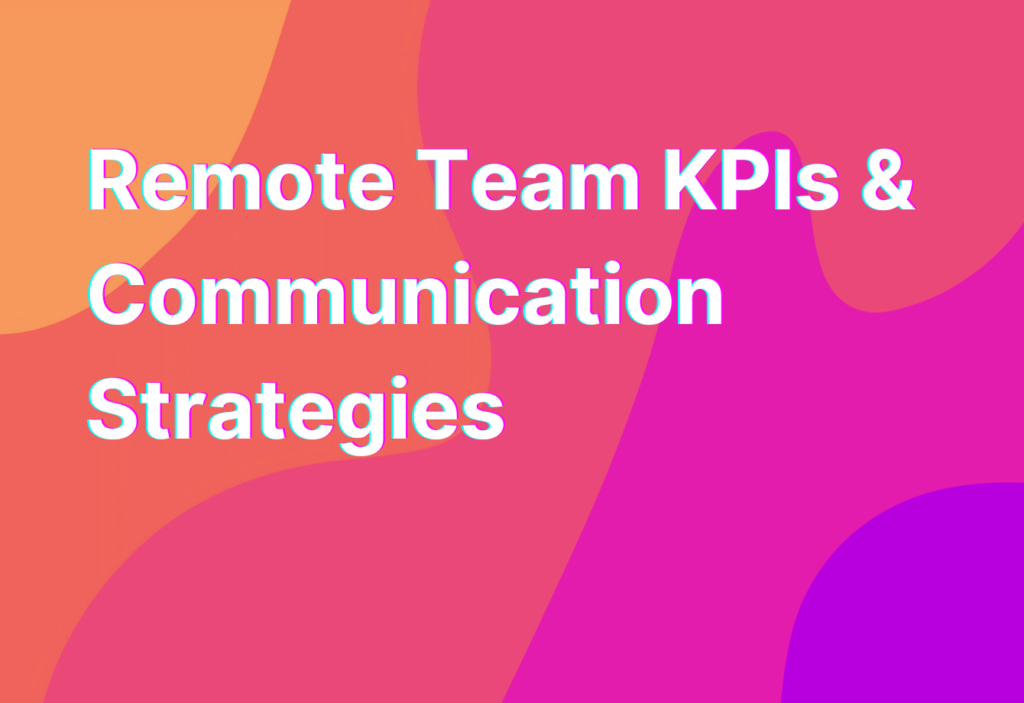Remote Team KPIs & Communication Strategies
Hey there, remote work enthusiasts! It’s Ashley here, your friendly remote work advocate with 10 years of experience in the tech industry. Today, I want to dive into the world of remote team KPIs (key performance indicators) and communication strategies. As we all know, effective communication is the backbone of any successful remote team. So, let’s explore some KPIs and strategies that can help your remote team thrive!
Key Performance Indicators (KPIs)
When it comes to measuring the success of your remote team, KPIs are essential. These metrics provide valuable insights into the performance and productivity of your team members. Let’s take a look at some key KPIs that you should consider tracking:
- Productivity: One of the most important KPIs for remote teams is productivity. This can be measured by tracking the number of tasks completed, the time taken to complete them, or the overall output of each team member.
- Quality: Another crucial KPI is the quality of work produced by your remote team. This can be measured through customer satisfaction surveys, feedback from clients, or by monitoring the number of errors or issues in the work delivered.
- Communication: Since effective communication is vital for remote teams, it’s important to track this KPI. You can measure communication by monitoring response times, the number of meetings attended, or the use of collaboration tools like Trello or Slack.
- Engagement: Keeping your remote team engaged is key to their success. You can measure engagement through surveys, feedback sessions, or by tracking the participation and involvement of team members in team activities.
- Team Morale: Lastly, team morale is an important KPI to consider. This can be measured through regular check-ins, team satisfaction surveys, or by monitoring the overall mood and motivation of your remote team.
By tracking these KPIs, you can gain valuable insights into the performance and well-being of your remote team. This data can help you identify areas for improvement and implement strategies to enhance productivity and communication.
Communication Strategies
Now that we’ve covered some key KPIs, let’s explore some effective communication strategies for remote teams. These strategies can help foster collaboration, improve team dynamics, and ensure everyone is on the same page:
- Regular Check-Ins: Schedule regular check-ins with your remote team members to discuss progress, address any concerns, and provide feedback. This can be done through video calls, phone calls, or even instant messaging.
- Use Collaboration Tools: Utilize collaboration tools like Trello, Asana, or Slack to streamline communication and keep everyone updated on project progress. These tools allow for real-time collaboration and help remote teams stay organized.
- Establish Clear Communication Channels: Set clear expectations for communication channels within your remote team. Whether it’s email, instant messaging, or video calls, make sure everyone knows which channel to use for different types of communication.
- Encourage Active Participation: Foster a culture of active participation within your remote team. Encourage team members to share their ideas, ask questions, and contribute to discussions. This can be done through virtual brainstorming sessions or regular team meetings.
- Provide Feedback and Recognition: Regularly provide feedback and recognition to your remote team members. This can be done through one-on-one feedback sessions, public recognition in team meetings, or even virtual team-building activities.
By implementing these communication strategies, you can create a collaborative and engaged remote team. Effective communication is the key to building strong relationships, fostering trust, and achieving success in remote work.
Wrapping Up
Well, folks, that wraps up our discussion on remote team KPIs and communication strategies. Remember, tracking KPIs can provide valuable insights into the performance and productivity of your remote team. And by implementing effective communication strategies, you can foster collaboration, improve team dynamics, and ensure everyone is on the same page.
If you want to dive deeper into the topic of remote team communication, be sure to check out our article on Leadership presence. It’s packed with even more tips and strategies to help you master communication in your remote team.
Until next time, happy remote working!


